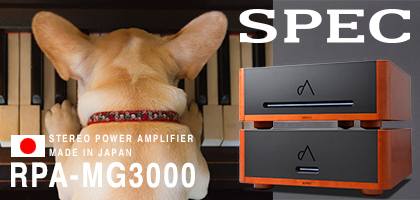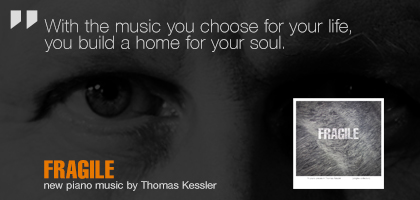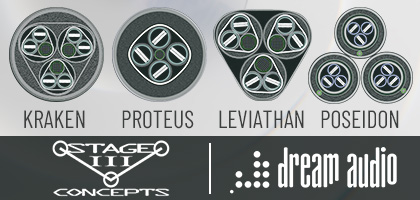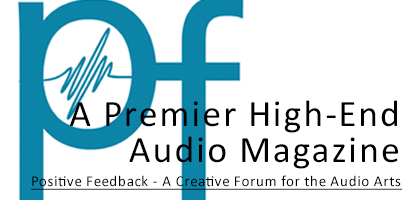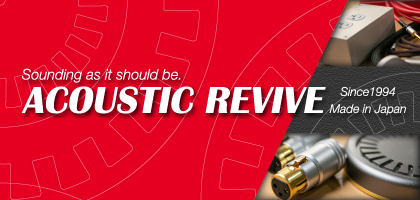 Contents
Contents
No. 257 October 2025
- COVER REVIEW: ANCIENT AUDIO Silver Grand Mono Mk II ⸜ power amplifier • monoblocks » POLAND • Kraków
- KRAKOW SONIC SOCIETY № 153: 30 years of ANCIENT AUDIO » POLAND • Kraków
- FEATURE ⸜ music & technology: HISAO NATSUME presents - In search for the lost great pianism Chopin tradition » part 2 (France) » JAPAN • Tokyo
- REVIEW: AUDIOPHONIQUE Classic AP 300D ⸜ power amplifier » POLAND • Pruszków
- REVIEW: AVATAR AUDIO Holophony No. 1 ⸜ loudspeakers • floor-standing » POLAND • Osowicze
- REVIEW: DIVALDI Gold PA One ⸜ integrated amplifier » POLAND • Kraków
- REVIEW: J.SIKORA Aspire ⸜ turntable (deck + tonearm) » POLAND • Lublin
- REVIEW: MB AUDIO CABLE Silver ⸜ analog interconnect ⸜ RCA » POLAND • Turza Śląska
- REVIEW: XACT N1 ⸜ LAN switch » POLAND • Wrocław

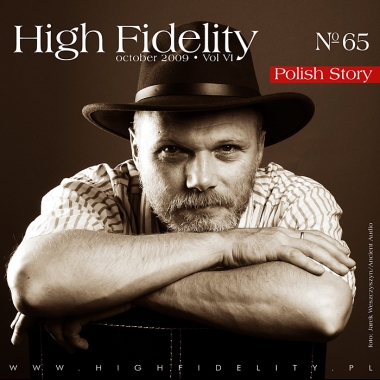
|
Bellum omnium contra omnes*

Thinking about audio, we often see it as a stage, where different forces battle. At least this is how it looks from the side of financially engaged entities – representatives from audio companies, their owners and their designers are often reluctant, or even hostile, against other reps, owners and constructors, calling them fools and frauds. I experienced that many times in discussions, mails and interviews. In best case scenario another company, manufacturing similar gear, is called “interesting”, but with the annotation, that “it is wrong in the most important aspects”. There are some exceptions to the rule, as I think this is a rule, but those are rather few. Those are easiest to find between companies offering electronics (amplifiers, CDs, etc) and loudspeaker manufacturers. Because those are not direct competitors, and even some cases of far going cooperation can be found, like between Audio Research and Wilson Audio (each company uses products of the other one in its sound laboratories), or KEF and Arcama (the same case, but even closer – Arcam electronics is manufactured in factories owned by GP Acoustics, which also owns KEF Audio). We can also find “marriages of convenience”, when two (or more) brands belong to the same owner, like B&W Bowers&Wilkins with Rotel and Classè or NAD and PSB Speakers. Besides those enforced cases, as those do not come out from the level of discussion in the audio world, this situation has nothing to do with a community of cooperating entities, which would build together something more, that they can master alone. This situation resembles, if we want it or not, that, what Thomas Hobbes described, when talking about interactions in a primitive society, in the origins of human activity, “a war of everybody against everybody”. 
This kind of behavior is a certain thought concept, as shown by Zygmunt Bauman, something kind like a “mystic”, and thus uncertain, being (Z. Bauman, Konsumowanie życia, Krakow 2009, p. 79), but it is a good starting point for a discussion. Because when we look at the audio world, then we can come to the conclusion, that we deal exactly with something like that, an never ending fight with the competition, regardless if it makes sense, or not, whether this competitor is better in some aspects, or the opposite. I called upon Konsumowanie życia Bauman not by coincidence, because living in a world of common consumption, a post-capitalist world, makes cooperation, something existing in the 50-ties and 60-ties, almost extinct now. Everything bases on provisional, uncertain settlements, and there is not even a partial agreement as to the fundamental assumptions. This is why it is hard to talk about any “hard” hierarchies and divisions, because those are everywhere, and it is close to impossible to distinguish those reliable ones from the meaningless. And to all this comes also the subjectivism of comprehension of the “absolute sound”. It should be seen trying to reach the sound, as it is live, but – because ideal recording is not possible, because there is no visual component to the sound perception (something absolutely basic, because we localize the sound sources by using our vision), etc – so we can talk only about coming closer to it, approximate it. And this means, that we can approach it from many sides, and the margins, within which we move, allow for many combinations of assets and shortcomings. This is why atop of the divisions between the manufacturers come many other audio classification grids. And one of the more living stereotypes – now we move away from the manufacturers and distributors to the clients – is a division based on the country of origin. 
This motive is clear in many texts, especially from the 80-ties and 90-ties, where the journalists made the tests with some pre-assumptions. According to them, British gear should sound warm, with pronounced midrange, mudded bass, German products should have underlined bass and treble, French ones be for “100%” quick and clear, but without saturation, and the American products intimidate with dynamics, power, size and nothing more. Those were of course generalizations, and as such, they made more harm than good. But I think, that they came out something, that could have really been observed. The divisions conform with country borders should be a result from some national characteristics, predispositions of a given nation and its way of living. Americans have large rooms at their disposal, hence they need big power, English have small rooms, so they can easier accommodate small stand mount speakers, etc. There is some truth in it, but – I think – they lost validity long ago. For once, because audio is now divided differently, than it would be suggested by administrative borders, because the companies are mostly owned by international capital groups and companies – NAD is owned by Canadians, Sonus Faber and Audio Research by Quadrivio SGR, Tannoy by the Danish TC Group, and McIntosh by the Japanese from D&M Holding, just to name a few examples. And yet many companies are in the hands of the Chinese - KEF Audio, Quad, Audiolab, Castle etc. One holding is formed by B&W Bowers &Wilkins, Rotel and Classé. So I think it is hard to talk now about “national” companies, at least when we talk about the big ones. Even more – in the last ten years there is a trend visible to unify the sound, it is – rather generally understood, but still – neutrality (or naturalness – depending on how we define those two descriptors). There is still place for an “idiomatic” approach to the devices, a clearly “distinctive” sound, but this is more a marginal appearance, adding to the richness of the audio world, and broadening our choice, but not its mainstream. 
This whole issue of “High Fidelity” is devoted to Poland, so how does it fare against all that? This is a very tricky question. Difficult to answer, because all the other mentioned countries can be proud of their uninterrupted audio history, with the hi-fi market naturally created after WWII (commonly available devices and parts from army surplus, a number of gifted engineers, mostly radar specialists, quickly developing recording techniques, and the appearance of the Long Play), while in Poland after 1945 came the years of collapse. The basis of all development is exchange of information, the possibility to compare – those are the basic elements of every test in a specialist magazine – and this was not available in the People Republic of Poland, and could not be available. The Iron Courtain shielded us is a very direct way, like a very big Faraday cage, from any novelties and experience. The biggest problem as I see it, was the big hole in the place, where west from the Oder, or even further, west to the borders of German Democratic Republic (GDR), were the sound sources, with vinyl in the first place. |
Because we lived in the society of permanent shortage of everything, there was no chance of getting valuable material for the discs. This is why most Polish discs of that time are worthless junk, loosely tying to hi-fi, not even mentioning hi-end. There were of course exceptions, but as usual with those, they did not constitute the reality. The recording part was also problematic, there was often a shortage of good recording tape, good equipment, etc. The series Polish Jazz shows, that the abilities of some of the sound engineers were huge – I have high resolution recordings made from master tapes during the last re-mastering, and I know what I am talking about. But there were only a few people, who could admire that mastery, because only few had a high class playback equipment. In Poland hi-end audio was something like the Nessie, the Loch Ness monster, something that may be there, somebody saw it, but who and when – remains a mystery. 
Poland, like other countries of the Eastern Block, manufactured devices for reproduction of music. The majority of them were not very successful attempts to imitate that what happened in the west, or – even worse (we talk about mass production here) – in Japan. Sometimes licensing was used, French or British, but not much came out of those, because the parts used for production were often of a much lesser quality. A fresh breeze were the products of Radmor, a company, that primarily manufactured products for the army, what made them better designed and better manufactured. But it did not change the general view of the Polish audio. This is still a history, that has not been written, but – in my opinion of course – this is how it looked like. The year 1989 and the next decade meant an explosion of freedom and choking the products and discs coming from the West. This is also the time, when first attempts were made to create our own audio brands, similar to the rest of the free world, meaning small manufactures, devoted to a maximally good sound. It turned out to be a very bumpy road, because we do not have many stable, bigger companies of that kind. I can think about the Warsaw ESA. Others disappeared from the market, or even manufacture something, but it does not translate into their “presence”. It is however striking, that the Czech and Slovak people could grab their chance, and on the basis of Tesla, but not only that, they created many smaller companies, that became known to the whole world - Pro-Ject, JJ, EAT, Canor (earlier Edgar), KR Audio, Xavian and many, many more. And I even want talk about the Germans. 
One of the basic ideas behind “High Fidelity” (earlier “High Fidelity OnLine”) was the promotion of interesting things happening on our market. I tried to show as many as possible information about Poland, and test as many as possible devices coming from our country. “Our” manufacturers have 50% discount on banners, because the lack of capital is their main problem. So a “Polish” issue is a logical result of this approach. When I sat with a pen in my hand (I am still “analog” to a large extent, I think easier with a piece of paper than with a computer screen), to create a list of products, which I would like to show you, then it turned out, that I would not be able to show even half of them, as they would not fit on the pages. And the next day I had another ten I did not think about the first time. This is the reason I will revisit this idea early next year, and we will have another “Polish” issue. In the last few years, some kind of mobilization of powers and money happened, and many interesting products were introduced to market with the Made in Poland logo on them. Even more, in the existing companies some accumulation of experience became visible, and electronics and loudspeakers came to existence, with a sound better than offered by the competition from abroad, and sometimes absolutely top notch. I think now mostly about Ancient Audio (this is why we have its owner and constructor on the cover), Harpia Acoustics and Gigawatt, but not only about them. A problem, which still exists at many companies, is the external design and craftsmanship quality, but Gigawatt shows, that it can be overcome in a way, that is breathtaking. The choice of devices for the issue Polish Story is arbitrary, I mean, that I tried to make the issue as differentiated as possible, and interesting, but the main criterion was the sound and manufacturing quality. Like I say, some companies just did not fit in, some were not able to supply their products in time, and some I do not know. That is life… *„War of everybody against everybody” (Latin) – Thomas Hobbes 
SALE Like any audio system also mine is evaluating, and from time to time I am forced to exchange some part of it. This is a very painful process, because it is costly, but the pain is stilled by the sound getting better and better. So I have some products to offer, because I am going to replace them with more expensive counterparts. It is not easy for me to say goodbye to them, because those are my beloved gear, chosen after long searches, elements I can trust, but I do need to do something with them, don’t I? This is why I want to propose the readers of “High Fidelity” a list of things I am going to sell. I am confident, that they will go to good hands (contact: opinia@highfidelity.pl):
|

|

|

|

|

|

|

|

|

|

|

|

|
About Us |
We cooperate |
Patrons |
|
Our reviewers regularly contribute to “Enjoy the Music.com”, “Positive-Feedback.com”, “HiFiStatement.net” and “Hi-Fi Choice & Home Cinema. Edycja Polska” . "High Fidelity" is a monthly magazine dedicated to high quality sound. It has been published since May 1st, 2004. Up until October 2008, the magazine was called "High Fidelity OnLine", but since November 2008 it has been registered under the new title. "High Fidelity" is an online magazine, i.e. it is only published on the web. For the last few years it has been published both in Polish and in English. Thanks to our English section, the magazine has now a worldwide reach - statistics show that we have readers from almost every country in the world. Once a year, we prepare a printed edition of one of reviews published online. This unique, limited collector's edition is given to the visitors of the Audio Show in Warsaw, Poland, held in November of each year. For years, "High Fidelity" has been cooperating with other audio magazines, including “Enjoy the Music.com” and “Positive-Feedback.com” in the U.S. and “HiFiStatement.net” in Germany. Our reviews have also been published by “6moons.com”. You can contact any of our contributors by clicking his email address on our CONTACT page. |
 



|
   |
main page | archive | contact | kts
© 2009 HighFidelity, design by PikselStudio,
projektowanie stron www: Indecity



